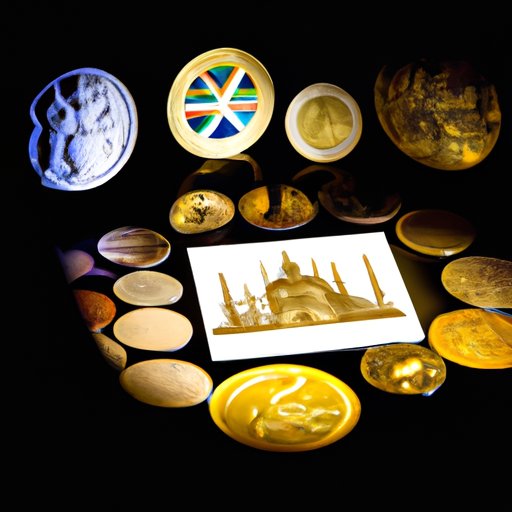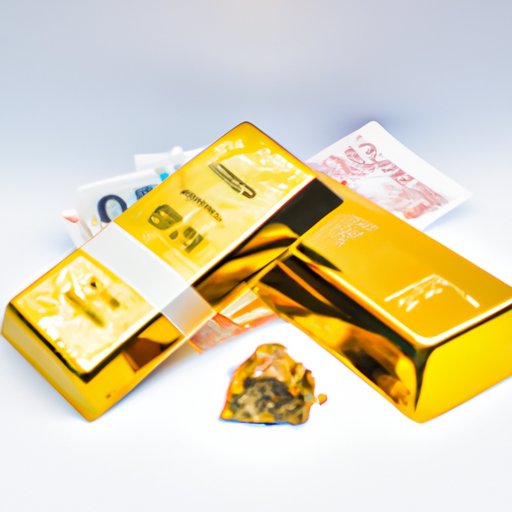
What is Money Made From? Exploring the Concept of Money Creation
Money is an essential part of our daily lives. We use it to buy goods and services, to pay bills, and to save for the future. However, few of us give much thought to where money actually comes from. Is it something that grows on trees, or is there a more complicated process involved? In this article, we will explore the concept of money creation and explain the ways in which money is manufactured and regulated.
An Overview of Currency Creation
The history of currency creation dates back thousands of years. In ancient times, people would trade goods and services directly, without using any form of currency. This process was known as bartering. However, as economies became more complex, people began using coins made from precious metals like gold and silver. These coins were minted by governments and used as a standard form of currency.
As economies continued to evolve, governments began issuing paper currency backed by precious metals. However, this link between currency and precious metals was eventually broken, and governments began issuing fiat currency. Fiat currency is currency that is not backed by any physical commodity, but rather by the trust and faith of the people using it. Central banks regulate the supply of fiat currency in each country.
The creation of currency is closely linked to the economy. When the economy is growing, central banks can increase the supply of money to meet demand, which can stimulate economic growth. However, if too much money is created, it can lead to inflation, which can reduce the value of the currency.
The Role of Government in Money Creation
Governments play an important role in the creation and regulation of money. The Federal Reserve in the United States, for example, is responsible for regulating the money supply in the country. It does this by setting interest rates and controlling the amount of money in circulation.
The government’s actions can have a significant impact on the value of money. For example, a government may choose to increase the money supply by printing more currency. This can lead to inflation, which can reduce the value of the currency. Alternatively, a government may choose to decrease the money supply by raising interest rates or reducing the amount of currency in circulation. This can lead to deflation, which can increase the value of the currency.

The Relationship between Money and Gold
The relationship between money and gold has a long and complex history. For many years, gold was used as a standard for currency. The value of a currency was based on the amount of gold held by the government that issued the currency. This meant that currencies were limited by the amount of gold available.
In the modern era, this relationship has changed. Currencies are no longer tied to gold, and the global economy is based on fiat currency. However, gold is still an important commodity and is valued as a reserve asset by many countries.
The Impact of Technology on Money Creation
Technology has had a significant impact on the creation and flow of money. Digital currencies like Bitcoin are becoming increasingly popular, and many people believe they represent the future of money.
Digital currencies are created using a technology called blockchain. Blockchain is a decentralized ledger that records transactions across a network of computers. It is highly secure and virtually impossible to hack. The creation and transaction of digital currencies using blockchain technology has the potential to revolutionize the way we think about money. In the future, it is possible that money may be a purely digital asset.
How Money is Manufactured
The manufacturing process for coins and paper currency is a complex one that involves many steps. Coins are stamped out of metal blanks, while paper currency is printed using specialized presses.
Each country has its own process for manufacturing currency. For example, in the United States, the Bureau of Engraving and Printing is responsible for printing paper currency. Coins are minted by the United States Mint.
A Global Perspective on Money Creation
Money creation is not limited to individual countries – it has a global impact. Different countries create and regulate their own currencies, and this can affect global economic trends. Changes in the value of one country’s currency can have a ripple effect on other countries.
Understanding global economic trends is essential for creating a stable and sustainable financial future.
Conclusion
In conclusion, money is a complex concept that is closely tied to the economy. Understanding the ways in which money is created and regulated is essential for anyone who wants to make informed financial decisions. From the history of currency creation to the impact of technology on money, there is a lot to learn about this fascinating subject.
For further reading on this topic, we recommend exploring books and articles on economics and finance.




